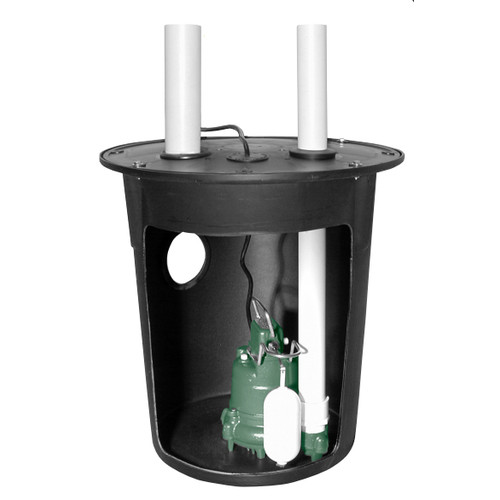
Push the connector up and hand-tighten the threads on the upper and lower check valves. The outlet tube and check valve should then be aligned, and the cemented coupler should be attached to the tube. Push the adapter for the base of the check valve onto the coupler before joining it to the outlet tube prior to joining it to the check valve. Utilizing the same primer and PVC adhesive process, connect the coupler to the head of the sliced PVC tube.
Ejector pumps zip#
Employ zip ties to hold the power cable over the float and protect it from grabbing anyplace in the basin after it’s within the basin and you’re confident the PVC tube is the perfect length. Slice the tube on a raised platform using a chainsaw, then level off the ends with a safety blade as a sharpening tool.ĭescend both into the sewage basin through the pump lever, with the outlet tube correctly cut and securely fastened to the sewage pump. If you’re changing the lower discharge tube, you’ll need to take measurements of the old outlet tube and factor in that the ultimate length with the new check valve placed may be somewhat varied. Without a weep opening, water beneath a check valve travels back into the hole, compressing any remaining air in the tube, perhaps preventing water from exiting the pump the following time it attempts to clear the basin. If the fittings are overtightened, they may break.Ĭreating a weep hole is perhaps one of the most critical stages because it prevents an air-lock in the pipe from causing the pump to dry up. Fasten the adapter-end of the PVC tube onto the sewage ejector pump with a wrench once it has been joined. To guarantee the proper functioning, ensure the float switch is placed at the perfect level for the pump.Īpplying the primer and PVC adhesive, connect the male-threaded connector to one end of the PVC tube. Leave the pump flowing only long enough to detect it a sewage pump should never be left without water, or it will be destroyed. Start the pump by activating the float switch. To examine the new ejector pump, connect it to a designated circuit.

This step is voluntary, but it will make subsequent servicing a lot easier. If you don’t wish to struggle with backflow later, now is the opportunity to put a ball valve over and as near to the check valve as feasible. Discreet check valves are available that are nearly silent while in use, which is a valuable attribute for basement toilets. Prior to inserting the pump in the sewage basin, the fresh check valve should be fitted. This is necessary to avoid smells and gas leaks. Clean any loose trash or objects adhering to the basin’s walls with caution. If you’ve taken out an old sewage pump, the first step you should do is glance over the vacant ejector hole for any evidence of corrosion to the bowl or anything else unusual. The most significant distinction between sewage and sump pumps is that sump pumps cannot pump solid debris. Finally, sewage ejector pumps are not similar to sump pumps, and they cannot be utilized alternately. The owner’s handbook will also tell you which components (such as float switches and alarms) are interoperable with your sewage pumps.Ĭheck local construction codes to ensure your ejector system meets the criteria. This will aid you in the setup procedure.
Ejector pumps how to#
3 How To Install A Sewer Ejector Systemįirstly, review the user manual’s directions and cautions.The only drawback it has is the price, it has a premium price tag but for the quality and ease you get, I believe it’s totally worth it. The bottom also has an anti float collar that keeps the basin from moving when ground water fills up below and tries to displace it. It has the QuickTree technology where you can easily access the float switch, in case it goes bust, without having to get your hands down the pit.

The basin is made with polyethylene capable of holding up to 41 gallons, the perfect size for the pump, with a shallow design that allows easy installation in difficult locations. It has a cast iron construction and a tough polymer impeller for years of reliable service. The corrosion resistant cast iron pump is a 4/10 HP beast that can easily move 6000 gallons per hour of sewage to a height of 10 feet. It’s a sewage system that packs everything you need for a much easier installation. If you want a pre-assembled sewage pump package, you may want to consider the Liberty P382LE41.


 0 kommentar(er)
0 kommentar(er)
